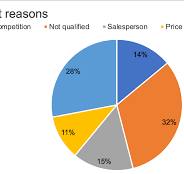How to start a learning platform can be a rewarding venture, offering valuable knowledge and skills to a diverse audience
In an era where knowledge is more accessible than ever, creating a learning platform can be a game-changer for educators, entrepreneurs, and professionals alike.

Whether you’re driven by a passion for teaching, a desire to share your expertise, or the ambition to tap into the booming e-learning market, starting a learning platform is a strategic and impactful endeavor.
A learning platform not only facilitates the distribution of educational content but also fosters an interactive environment where users can engage with material, track their progress, and connect with others.
The rise of digital education has transformed how people learn, offering flexibility and accessibility that traditional methods often cannot match.
This step-by-step guide will walk you through the essential phases of launching your learning platform, from initial conception to full-scale deployment.
By understanding the key components and processes involved, you’ll be better equipped to navigate the complexities of the e-learning landscape and build a platform that stands out in a crowded market.
Whether you’re aiming to create a niche site focused on specialized topics or a broad platform offering a variety of courses, this guide will provide the insights and tools you need to succeed.
Here’s a clear, interactive guide to help you get started:
1. Define Your Vision

Begin by outlining the purpose and goals of your learning platform. Ask yourself:
- What subjects or skills will you focus on?
- Who is your target audience?
- What makes your platform unique?
This step sets the foundation for your entire project, so take the time to refine your vision.
2. Conduct Market Research

Understand the landscape of existing learning platforms. Look into:
- Current trends in e-learning.
- Competitor platforms and their offerings.
- Gaps in the market that your platform could fill.
Gather insights through surveys, focus groups, or industry reports to validate your ideas and refine your approach.
3. Design Your Platform
To start a learning platform, you must create features and functionalities your platform will offer. Consider:
- Course structure and content delivery methods (videos, quizzes, interactive lessons).
- User experience (easy navigation, engaging design).
- Technology stack (platform software, hosting services).
Sketch out your platform’s layout and functionality to create a blueprint for development.
4. Develop High-Quality Content

Content is king. Develop or source high-quality educational materials that align with your platform’s goals. This includes:
- Crafting engaging and informative course materials.
- Ensuring content is interactive and accessible.
- Incorporating multimedia elements like videos, infographics, and interactive quizzes.
Collaborate with subject matter experts if needed to enhance content quality.
5. Choose the Right Technology to start a learning platform
Select a platform or build a custom solution based on your needs. Options include:
- Learning Management Systems (LMS): Pre-built platforms like Moodle or Canvas.
- Custom Development: Tailored solutions for unique requirements.
Ensure the technology supports scalability, security, and user engagement.
6. Launch a Pilot Program

Before a full-scale launch, test your platform with a smaller audience. This will help you:
- Identify any technical issues or user experience flaws.
- Gather feedback to make necessary improvements.
- Build a base of early adopters who can provide testimonials.
Use the insights from your pilot to refine your platform and prepare for a broader launch.
7. Implement a Marketing Strategy
Promote your platform through various channels:

- Social Media: Create engaging posts and ads.
- Email Marketing: Send newsletters and promotional offers.
- Content Marketing: Publish blog posts, case studies, and success stories.
Engage with your audience through webinars, workshops, and free trials to attract and retain users.
8. Monitor and Improve on how to create learning platform
Once launched, continuously track your platform’s performance. Key areas to monitor include:
- User engagement and feedback.
- Course completion rates and learning outcomes.
- Technical performance and support requests.
Use this data to make ongoing improvements and updates to enhance user experience and maintain relevance.
Conclusion
Starting a learning platform involves careful planning, development, and execution. By defining your vision, researching the market, designing an engaging platform, and continuously improving based on feedback, you can create a valuable educational resource that meets the needs of your audience. Embrace each step interactively and remain adaptable to ensure your platform’s success





Pingback: How to Make Money Writing a Blog: A Comprehensive Guide - Best deal Marketing
Pingback: Free Online Courses in Nigeria: Unlock Your Future Today - Best deal Marketing